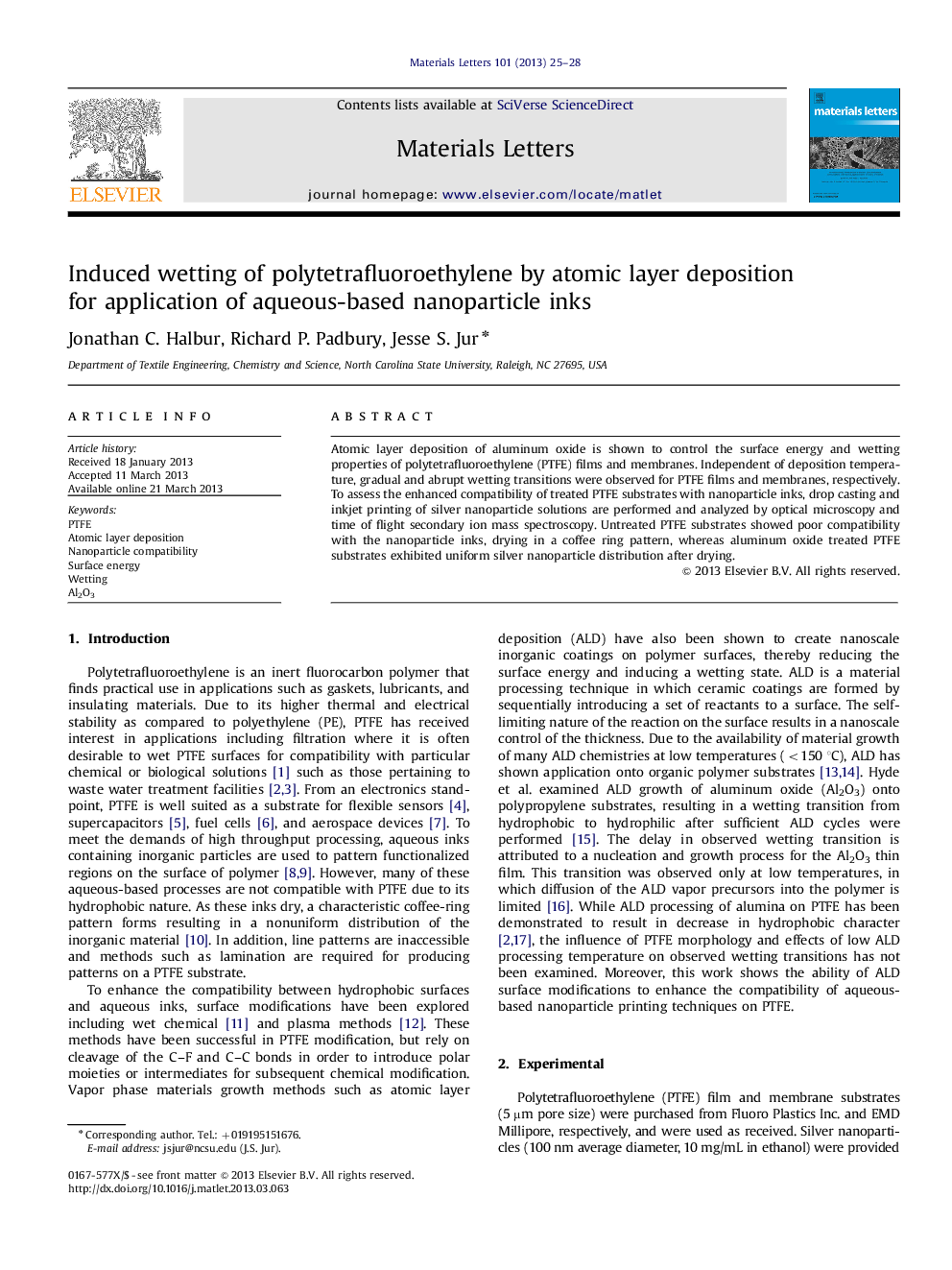| Article ID | Journal | Published Year | Pages | File Type |
|---|---|---|---|---|
| 1645257 | Materials Letters | 2013 | 4 Pages |
•Al2O3 thin films were deposited onto polytetrafluoroethylene by atomic layer deposition.•Influence of deposition temperature and substrate morphology was assessed.•Temperature independent abrupt and gradual wetting transitions occurred for membranes and films, respectively.•Compatibility between PTFE and aqueous Ag nanoparticle solutions was examined using optical microscopy and time of flight secondary ion mass spectroscopy.•Uniform deposition of Ag nanoparticles was seen after approximately 100 cycles of Al2O3 ALD.
Atomic layer deposition of aluminum oxide is shown to control the surface energy and wetting properties of polytetrafluoroethylene (PTFE) films and membranes. Independent of deposition temperature, gradual and abrupt wetting transitions were observed for PTFE films and membranes, respectively. To assess the enhanced compatibility of treated PTFE substrates with nanoparticle inks, drop casting and inkjet printing of silver nanoparticle solutions are performed and analyzed by optical microscopy and time of flight secondary ion mass spectroscopy. Untreated PTFE substrates showed poor compatibility with the nanoparticle inks, drying in a coffee ring pattern, whereas aluminum oxide treated PTFE substrates exhibited uniform silver nanoparticle distribution after drying.
